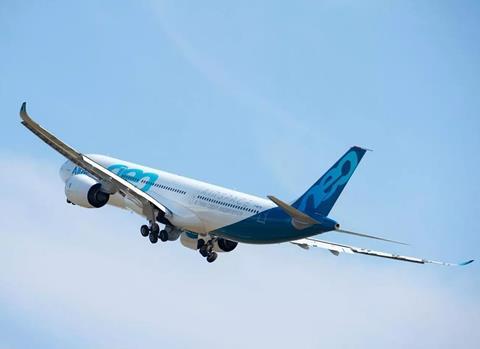Airbus is to introduce an operational low-speed performance enhancement to the A330-900 towards the end of next year which will increase lift and reduce drag during climb.
The improvement is achieved through a combination of faster landing-gear retraction and the use of intermediate take-off flap settings.
Airbus is to implement the enhancements – through a package called ‘Step 4’ – in the fourth quarter of 2025.
With better A330-900 climb performance, the airframer says operators of the twinjet could achieve an additional uplift of 2.6t, and perhaps as much as 4t, in take-off weight at certain airports as a result of the flap configuration and landing-gear changes.

The A330-900 has five flap settings from fully-retracted to fully-deployed, but the airframer has been able to smooth the aerodynamic discontinuity between them by introducing four additional intermediate flap settings – giving nine in total.
These four supplemental “bridging” settings, says Airbus, are designated 1B, 2B, 2C and 3B. They will be available for selection through the multi-function control and display unit.
Once the pilot moves the flap lever to the take-off position the aircraft’s avionics will automatically extend the slats and flaps to the selected intermediate.
Corresponding calculated take-off speeds will be available to the pilot through the electronic flightbag.
Although no mechanical changes are needed for the flap lever or the aircraft’s high-life devices, certain avionics – such as the flight-management guidance and envelope computer – will require hardware modifications.
The additional take-off configurations will be complemented by a 0.8s reduction in landing-gear retraction time and a 0.2s quickening of gear door closure.
Airbus says this has been achieved through installation of new main landing-gear actuators and hydraulic control equipment. It adds that a new automatic gear-door opening function also enables the shortened retraction sequence to begin “a couple of seconds earlier”.


























